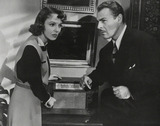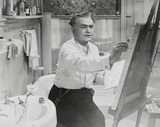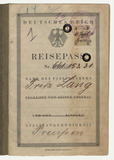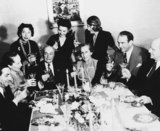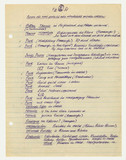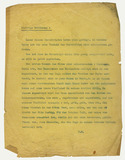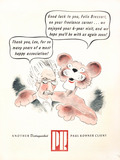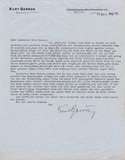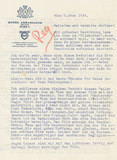Fritz Lang and Bertolt Brecht: Hangmen Also Die (1943)
The anti-Nazi film Hangmen Also Die was made in Hollywood in 1943 as a collaboration between Fritz Lang and Bertolt Brecht. Since the 1973 publication of Brecht’s Journals written in the forties, attention has not only focused on the film, but also on the relationship between the two artists.
Fritz Lang: The Film Noir Scarlet Street (1945)
Scarlet Street (1945), after The Woman in the Window (1944), was Fritz Lang’s second film in his so-called “Black Series”. Once more it was Edward G.
Fritz Lang’s Passport (1931)
Joseph Goebbels is said to have admired him for his two-part silent film The Nibelungs (1924) and Metropolis (1926), while his legendary work M (1931) has been voted by film historians as the most important German film of all time. Fritz Lang was unquestionably among the most notable and influential filmmakers in Weimar Republic Germany.
Group photo of Albert Bassermann’s birthday party (1942)
Many German emigrants in America were heartened by the news of actor Albert Bassermann’s arrival in New York on 15 April 1939. One of the greatest character actors was now among them, not out of necessity, but out of principle.
Handwritten notes by Max Reinhardt on A Midsummer Night's Dream (1935)
Max Reinhardt's production of Shakespeare's A Midsummer Night's Dream in 1934 at the famous 18,000-seater "Hollywood Bowl" was a huge success. William (Wilhelm) Dieterle had the idea of making a film from the stage work; he was a pupil of Max Reinhardt and at this time under contract as a director at Warner Bros.
Hans Sahl: Vincent, film script (undated)
The writer Hans Sahl worked in exile for several years, probably starting in 1937, on a biographical film about the painter Vincent Van Gogh, to whom he felt connected in his loneliness but also in his creative drive.In all the texts that Sahl composed for this project and all the letters that he wrote about it, one can clearly feel how close this idea was to his heart.
Irene Heymann on Paul Kohner and the European Film Fund (interview excerpt)
In 1938 the agent Paul Kohner, described by his long-time secretary Irene Heymann as a man with a big heart, founded the European Film Fund along with various German filmmakers already established in Hollywood, including Ernst Lubitsch, William (Wilhelm) Dieterle, Walter Reisch and Billy Wilder.Heymann recalled in an interview that, in the early days, Kohner forced his clients to donate part of their fee to the charity - later this levy became common practice.
Kohner Agency advertisement for Felix Bressart (1945)
Felix Bressart, who made his way to the USA in 1938 via stops in Switzerland, Austria and France, was lucky: he was one of the few émigré actors on the books of the newly established Paul Kohner Agency who readily found engagements upon alighting in the New World.
Kurt Gerron: Letter to Paul Kohner (24 January 1938)
For any artist whose primary tool is language, the use of the native tongue carries particular existential importance. Wordplay, allusions and double entendres are only truly ever mastered by a native speaker.
Letter from Walter Reisch to Marlene Dietrich, 8 March 1934
The screenwriter Walter Reisch and actress Marlene Dietrich were friends. After Dietrich's move to the United States in 1930, they sent each other long letters.
